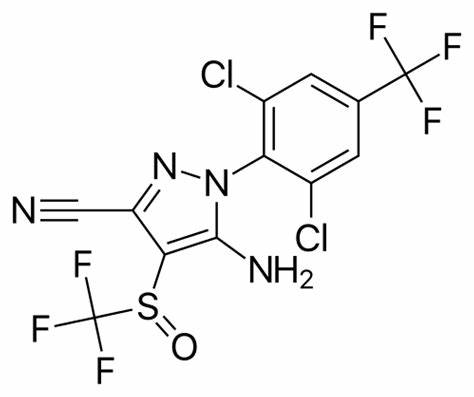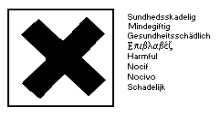Pyriproxyfen
Pyriproxyfen (Pyriproxifen, C20H19NO3, CAS#95737-68-1, '2-[1-Methyl-2-(4-phenoxyphenoxy)ethoxy]pyridine', '2-((1-(4-Phenoxyphenoxy)propan-2-yl)oxy)pyridine') a natural hormone in insects and disrupts their growth. It is a type of insect growth regulator that affects mostly young insects and eggs. Pyriproxyfen affects many types of insects, including fleas, cockroaches, ticks, ants, carpet beetles, and mosquitoes. It has been registered for use in pesticides by the Environmental Protection Agency (EPA) since 1995.
Uses
Pyriproxyfen is found in more than 300 registered pesticide products. These include products used inside homes and on lawns. Many products are also used in agriculture as leaf treatments on food crops. Pyriproxyfen is commonly used directly on pets to control fleas and ticks.
Pyriproxyfen products can come in many forms, including liquids, granules, dusts, and pellets. Other products are used in aquatic settings like birdbaths and ponds. Some materials are infused with pyriproxyfen, such as pet flea collars. Products with pyriproxyfen often include other insecticides to kill adult insects.
Package & Transport
Package Size: N.W: 20/24 Kg G.W: 25/29 Kg;
UN Number: 3349
Hazard Class: 6.1
Notice
1. Avoid mixture with food and forage, and avoid reach of children.
2. Use respirator and glove when handling, clean completely with soap and water when splashed into skin.
3. Destroy and bury waste drum or dip it into alkali liquid for several days for recycling uses.
4. Storage in dry, cold area and avoid light.
Pyriproxyfen
 |
|
| Molecular Formula | C20H19NO3 |
| Molar Mass | 321.4 g/mol |
IUPAC Name
Identifiers
SMILES[show]
InChI[show]
Properties
| Appearance | pale yellow solid |
| Density | 1.24 g/cm3 |
| Melting point | 47 ℃ |
| Boiling point | 318 °C |
| Vapour pressure | 1.33 x 10-5 Pa at 22.8°C |
| Solubility in water | 0.367 ± 0.004 mg/l |

 English
English 中文简体
中文简体





 Arabic
Arabic  French
French  Italian
Italian  German
German  Japanese
Japanese  Korean
Korean  Portuguese
Portuguese  Russian
Russian  Spanish
Spanish 